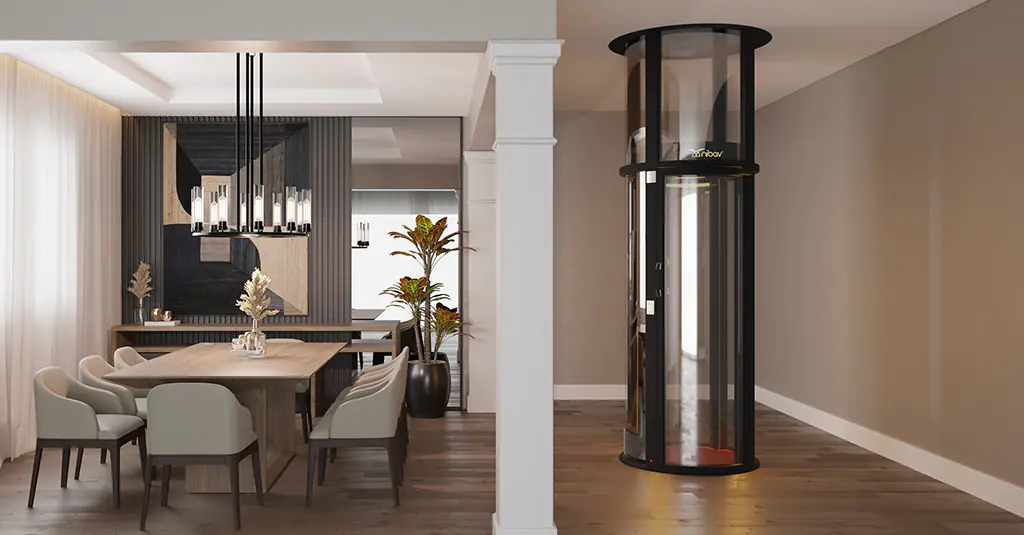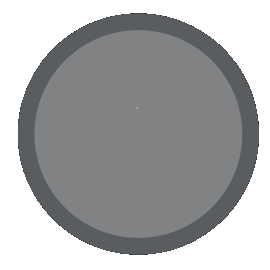
From multi-story bungalows in Kuala Lumpur to hilly properties in Penang and family homes in Johor Bahru, homeowners are enhancing circulation, comfort, and style with glass lifts—panoramic, space-saving home elevators that introduce light and sophistication to every level. Better still, today’s elevators are designed specifically for residences and not retrofitted commercial shells. With Nibav Malaysia, you can expect a compact footprint, fast, straightforward installation (no pit, no machine room), ultra-quiet operation, and curated finishes that elevate interior design.
If you are researching glass lifts costs in Malaysia, you might be wondering about three things:
1. What are realistic base costs for the 2025 calendar year?
2. What models would fit my home, family, and budget?
3.What features (safety, design, energy efficiency, installation) would matter most over the 5 to 10 year life of the lift?
This guide summarizes Nibav Home Lifts model ranges, explains what influences cost, and illustrates how to effectively plan your investment, so that the lift you choose not only looks good but also operates well.
Table of Contents
- Glass Lifts
- Glass Lifts Average Pricing: Quick Reference (Malaysia, January 2025)
- What’s the Basis of the Glass Lift Price?
- Model-by-Model: What Fits Your Home?
- Daily Benefits: More Than a Spec Sheet
- Budget vs Premium: Where Do You Place Value?
- Installation Timeframe: Days, Not Months
- Safety & Comfort: Built In, Not Added
- Total Cost of Ownership (TCO): The 5–10 Year View
- Don’t Buy on Price Alone: Plan with a Checklist
- FAQs — Glass Lifts Malaysia
Glass Lifts
In residential design, “glass lift” often refers to panoramic home elevators that use clear or smoked reinforced panels to create a 360-degree cabin experience—flooding interiors with daylight while turning vertical circulation into a design feature. Nibav’s cabins use reinforced polycarbonate (which is far stronger and lighter than conventional glass) inside a sleek, self-supporting shaft. The air-driven lifts (pneumatic) system takes energy mainly when going up; on the way down, energy is free and is controlled by balancing air pressure to reduce energy use, with no oily hydraulics.
Why they are loved:
- Lighting and sightlines: The effect is a bright, open “vertical light well.”
- Compact and pit-less: No pit, no machine room—easier retrofits with less civil work.
- Fast and tidy installations: Pre-engineered modular sections—typical homes are installed in days, not months.
- Quiet rides: Smooth suspension and gentle starts/stops.
- Design flexibility: Options for clear or smoked panels, ambient and “starlight” ceilings, and matched finishes.
Glass Lifts Average Pricing: Quick Reference (Malaysia, January 2025)
Use these as base or starting prices for planning purposes—final quotations will vary based on site conditions, options, finishes, and timeframes.
| Nibav Model (Malaysia) | Stops | Typical Starting Prices (RM) |
| Series IV (compact) | 2 | 1,09,900 |
| 3 | 1,22,900 | |
| 4 | 136,000 | |
| Series IV Max (more cabin space) | 2 | 136,000 |
| 3 | 1,52,900 | |
| 4 | 1,67,900 | |
| Series III (compact) | 2 | 69900 |
| 3 | 84,900 | |
| 4 | 99,900 | |
| Series III Max | 2 | 99,900 |
| 3 | 114,900 | |
| 4 | 129,900 | |
| Series V | 2 | 119,000 |
| 3 | 134,900 | |
| 4 | 149,900 | |
| Series V Max | 2 | 149,900 |
| 3 | 164900 | |
| 4 | 179,900 |
What’s the Basis of the Glass Lift Price?
1) Stops & Travel Height
- G+1 vs G+2 vs G+3: Each landing adds doors, wiring, commissioning, and travel height. Expect material and time costs to scale.
2) Cabin Diameter & Model Family
- Compact (Series III / IV): Tight footprint, best value per ringgit, ideal for stair voids and corners.
- Max / Pro variants: Larger diameter (more comfort and presence), higher materials/logistics, richer specifications.
3) Finishes & Interior Options
- Glazing: Clear or smoked.
- Lighting: Ambient or “starlight” ceiling.
- Hardware: Designer rails, matched handles, refined frames.
Because the lift is visible, investment here pays aesthetic returns.
4) Safety & Ride Quality (Standard with Nibav)
Automatic, controlled descent during power loss; overload/obstruction sensors; child lock; an intercom; lighting and ventilation; precision levelling; soft starts/stops; refined acoustics. These are integrated—not bolt-ons—so you’re not paying to “add” essentials later.
5) Site Access & Logistics
Condo/strata approvals, lift-in route limitations, hoisting limits, working-hour windows, and parking will all factor into the program and cost. Early discussion = fewer surprises.
6) After Sales & Warranty
A preventive maintenance plan with defined response times and local parts availability (blower/motor, seals, control boards) makes ownership predictable.
Model-by-Model: What Fits Your Home?
Series IV (Compact)
- Intended users: Terrace homes, semi-detached homes, duplexes, and retrofits that desire maximum light for minimal footprint.
- Reasons it resonates: Great value, elegant design language, fast to assemble with no pit or machine room.
Series IV Max (Larger Cabin)
- Intended users: Multigenerational households, statement installations, or anyone who wants a roomier cabin feel.
- Reasons it resonates: Presence and comfort, still compact by conventional standards.
Series III (Compact)
- Intended users: Similar audience to Series IV compact, often chosen for footprint and cost efficiency.
Series III Max / Pro / Max Pro
- Intended users: Owners who want capacity, premium finishes, or top-tier specifications.
Daily Benefits: More Than a Spec Sheet
- Safer, dignified mobility for grandparents, children, recovering family members—or when you’re carrying heavy groceries.
- Quieter homes: Minimal acoustic footprint preserves sleep and conversation.
- Design enhancement: Clear or smoked panoramic cabins draw daylight into the core of the home.
- Future-proofed living: Keeps every level usable years from now, not just today.
Budget vs Premium: Where Do You Place Value?
Budget (best value):
- Compact cabin (Series III / IV)
- Essential stops only (e.g., G+1 or G+2)
- Standard clear glazing and ambient lighting
- Standard controls (child lock, intercom included)
Premium (design statement):
- Max / Pro cabin
- Additional landings (e.g., G+3)
- Smoked glazing and starlight ceiling
- Designer rails, bespoke finishes, signature placement
Rule of thumb: Protect your safety stack first (standard with Nibav), then invest in aesthetics, especially if the shaft is highly visible—you’ll feel (and see) the return every day.
Installation Timeframe: Days, Not Months
Because Nibav lifts are modular and assembled by factory-engineered teams, on-site work is usually measured in days once preparation and condo/strata approvals are in place. With no pit and no machine room, dust and disruption are minimal. Homeowners are often delighted at how quickly the lift becomes part of daily life.
Safety & Comfort: Built In, Not Added
Your Nibav lift is designed with:
- Automatic descent to the nearest landing in the event of a power failure
- Overload/obstruction sensors and child-lock controls
- Intercom, lighting, and ventilation for peace of mind
- Precision levelling and soft starts/stops for knees, joints, and hands full of bags
- Refined acoustics for a low-noise ride
Safety is a philosophy at Nibav Malaysia—it’s built in as standard.
Total Cost of Ownership (TCO): The 5–10 Year View
When comparing glass lifts price across technologies, include ownership economics:
- Energy profile: Beyond the power required primarily for ascent, descent works with balanced air pressure—lower utility costs than legacy hydraulics.
- Less construction: The self-supporting design (no pit, no machine room) reduces installation time and keeps the build clean.
- No oil: No hydraulic oil to change or dispose of (fewer consumables).
- Local service: Trained technicians and local parts help lower downtime.
Even when you invest in premium finishes, many homeowners find TCO compelling thanks to neat installs, efficient operation, and responsive, local support.
Don’t Buy on Price Alone: Plan with a Checklist
- Identify: How many floors/stops? Travel height? Location? Cabin size?
- Safety first: Auto-descent? Sensors? Child function? Intercom? Ventilation? Leveling?
- Finishes: Clear/smoked glazing, ambient/starlight lighting, hardware palette.
- Request an itemised proposal: Technical scope, logistics, timeline, warranties, exclusions.
- Set approvals & delivery: Obtain strata/condo approvals, confirm lift-in route, confirm working hours.
- Coordinate installation days: Agree on days on site, dust management, and handover date.
- Handover & training: Quick-start guidance and a cadenced maintenance plan.
FAQs — Glass Lifts Malaysia
Q1: What space do I need?
Most compact cabins require a small circular or near-circular footprint with typical ceiling height. A Nibav consultant will confirm exact clearances (stair voids, corners, lightwells).
Q2: Will renovation works be required?
Usually no. Nibav’s self-supporting design requires no pit and no machine room, keeping civil works to a minimum—even in retrofits.
Q3: How long to install?
Typically days, not months (subject to site readiness and condo/strata rules).
Q4: Do glass lifts run quietly and are they energy efficient?
Yes. Pneumatic systems draw energy mainly for ascent; descent is air-balanced. Refined suspension and acoustics keep indoor noise very low.
Q5: How do I keep ownership costs predictable?
Choose a service plan, ensure local parts accessibility, and confirm warranty coverage on key components (blower/motor, seals, boards).

Aiman Faris
This was a very insightful read. I live in Putrajaya and have been exploring ways to modernize my villa without heavy renovations. The no-pit and no-shaft feature of Nibav villa lifts really stands out. Luxury combined with sustainability is exactly what modern homes need.
Nur Aisyah Rahman
Excellent article explaining how villa lifts are redefining luxury living in Putrajaya. I especially liked the part about air-driven technology and zero energy consumption during descent. It’s impressive how Nibav blends design with eco-friendly engineering.
Daniel Wong Wei Jian
Very well-written and informative. The safety features mentioned, like automatic descent and child lock systems, give a lot of confidence for families with elderly parents and kids. This truly feels like the future of residential living in Malaysia.
Siti Khadijah Noor
I didn’t realize home lifts could add so much aesthetic value to a villa. The panoramic glass cabin and customizable interiors sound amazing. Nibav lifts seem perfect for Putrajaya’s modern architectural style.
Hafiz Zulkifli
This blog clearly explains why villa lifts are more than just convenience—they’re a lifestyle upgrade. The fast installation and low maintenance aspects are huge advantages for homeowners. Great content and very relevant to Malaysian luxury homes.